What Chatbot Development Strategies
Do Top Ecommerce Brands Use?
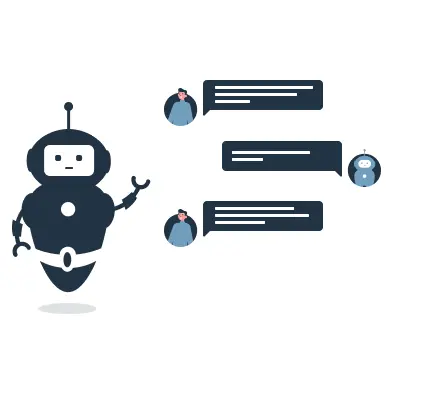
What Chatbot Development Strategies
Do Top Ecommerce Brands Use?
You’ve probably heard the funny anecdote of the kindergartener ordering a delivery of toys using Amazon Alex’s voice bot. And you may have used H&M’s or Sephora’s messenger chatbot to buy some of their products. It looks like chatbots are already here, and ecommerce companies benefit from them the most since they help online stores increase income and decrease spendings on support services.
In this article, we will talk about the best practices of conversational commerce (online shopping using chat, messaging, or voice), and how to build a chatbot and measure its effectiveness for your company.
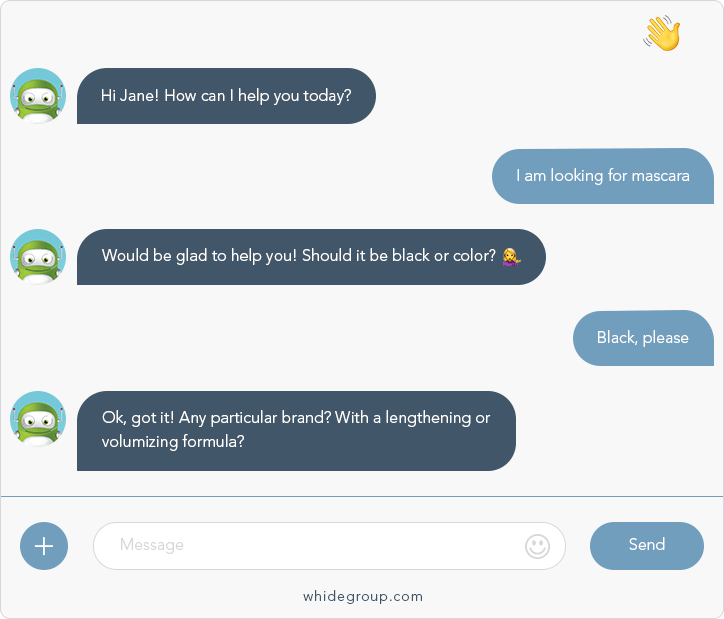
Table of Contents
ToggleThe ecommerce sector has become one of the most viable fields for chatbots. Today chatbot market share in the ecommerce industry is 14.56%. Consider market giants such as Alibaba, Walmart and Amazon -each already uses chatbots in their business. Below are some of the reasons ecommerce brands build chatbots:
Many of ecommerce sites have large catalogs that are difficult to navigate. Their search instruments and filters are inconvenient to use on mobile phones and even on some websites. Shopping chatbots replicate the experience of physical stores, where customers get the professional help and advice from a shop assistant, and don’t have to search for products using inconvenient filters. All they need to do is tell what they’re looking for to get the product recommendations right away.
Numbers provided by Ubisend are spectacular:
Summing up, positive customer experience and user retention are key factors of stimulating the growth of ecommerce business, and chatbots provide efficient support in this industry. Companies like Sephora, H&M, Harper Collins, and Starbucks are already using them to get a better understanding of their audience, provide customer support, and promote products, all of which help increase sales.
As we’ve stated, chatbots can assist you well in e-business. So now let’s look further into the details. What are the types of chatbots and how do they differ?
As you probably know, the main goal of chatbots in ecommerce is to help companies sell products and services. However, they can also be useful for other related activities, including customer service, marketing, PR, and branding. Still not convinced whether you need a chatbot for your e-business? Let’s consider various use cases for chatbots for ecommerce companies.
This type of bot recommends products or styles based on the user’s previous answers or information they mentioned during onboarding. The greatest example of a product finder is Victoria’s Secret’s Bot called PINK: with its help, women can find the most suitable bras.
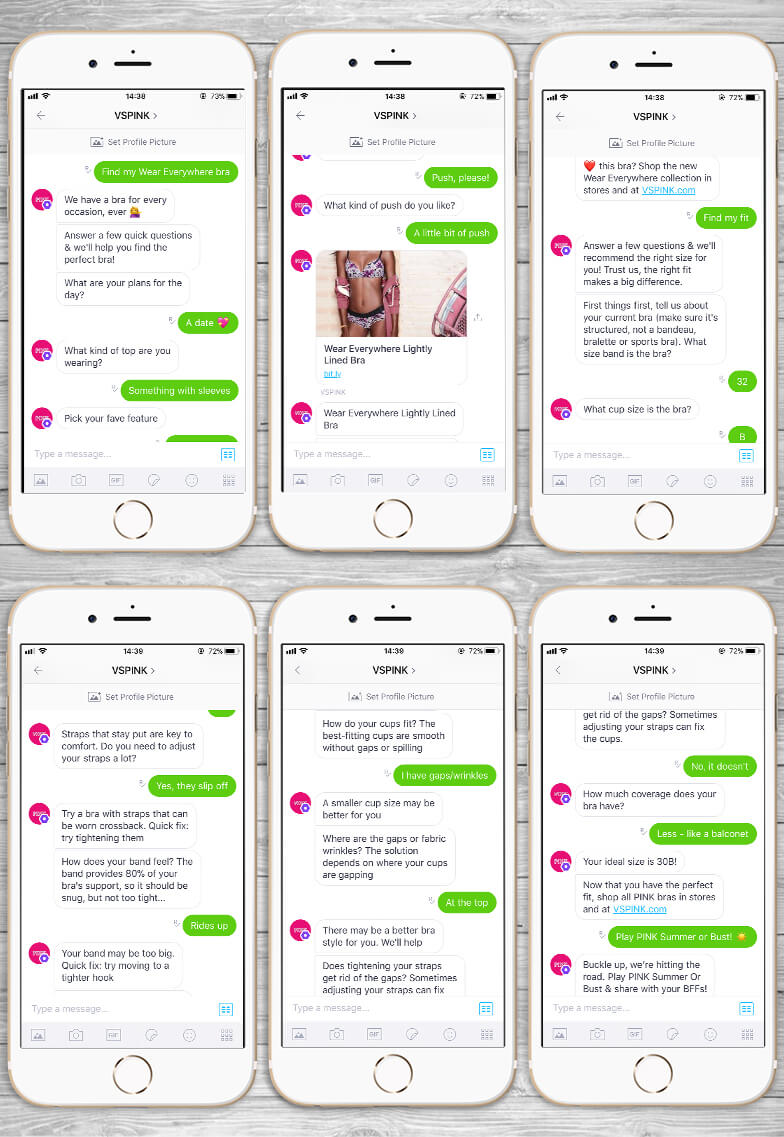
Everything is simple here: these chatbots allow customers to track their orders and status. The Best Buy Order Status Chatbot requires users to fill in their name and phone number, and then it provides them with the information about their order.
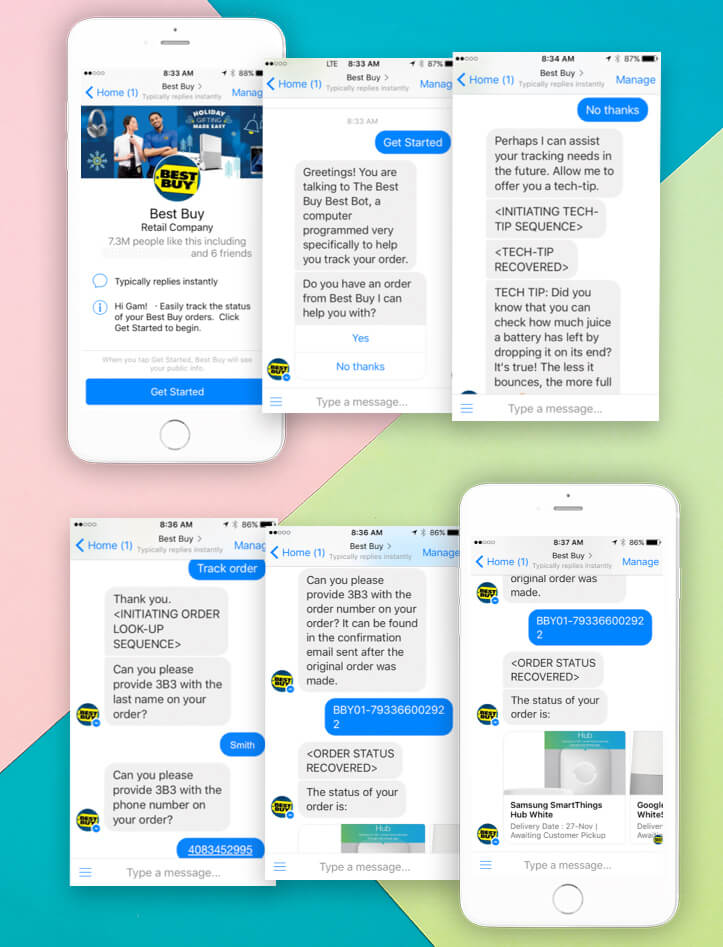
Chatbots for customer service replace human support, and answer users’ questions fast, efficiently, and using their chosen language (which is especially important for multinational brands). Also they provide support 24/7. These bots are not only able to perform routine tasks, they can handle more complicated conversations. The Starbucks chatbot, for example, places customer orders using voice or text and informs users when the order will be ready and how much it costs.
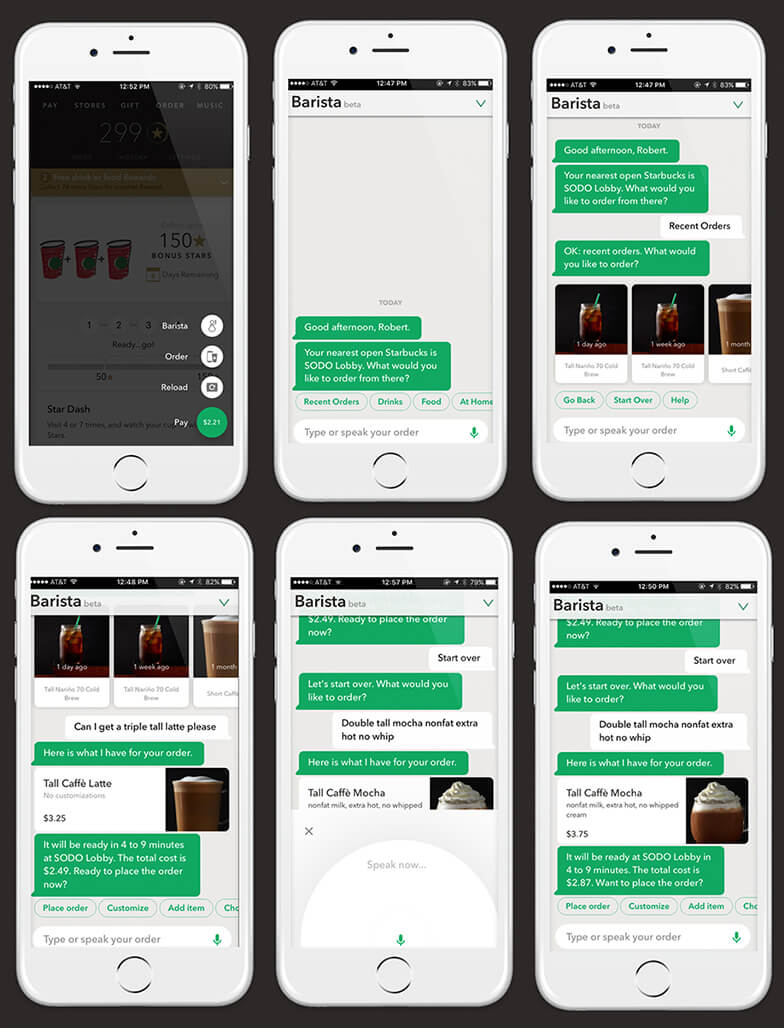
Source:Adweek
These bots send messages to users, advertisements about sales, or other notifications. For example, when a store is running out of a product in the user’s wishlist, a chatbot can send a notification letting the customer know about it. For example, eBay’s chatbot notifies people about price reductions on their favorite products.
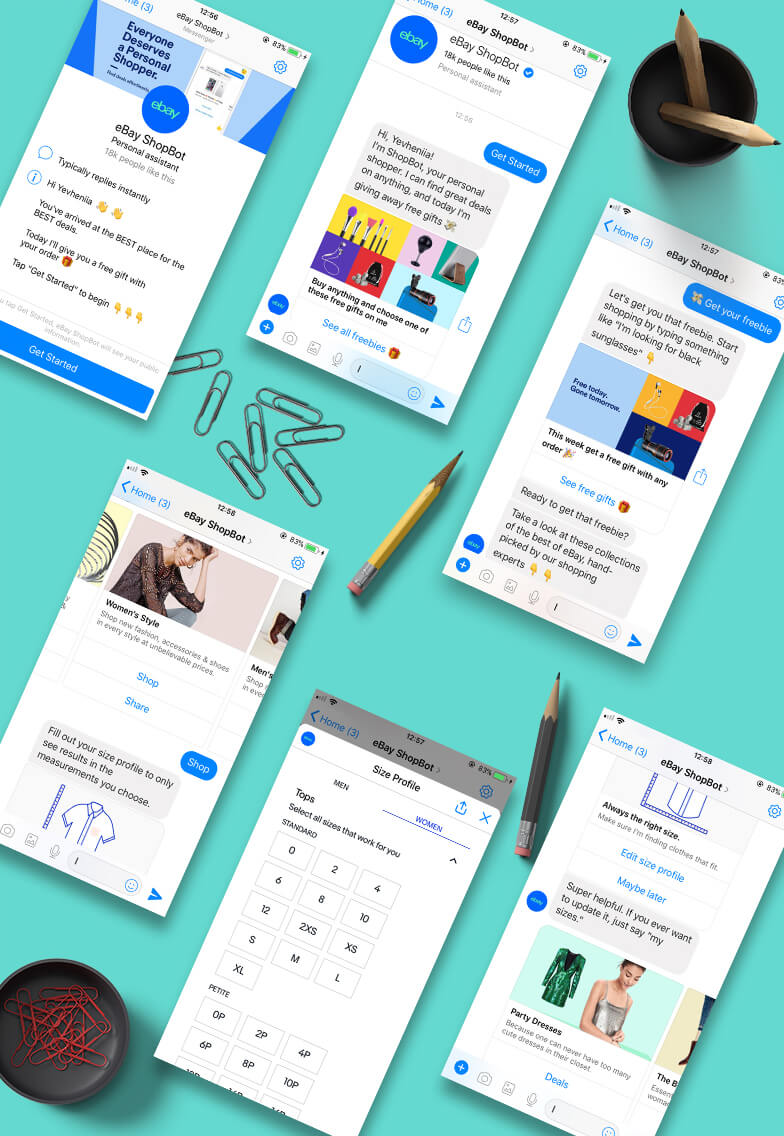
We have listed four use cases, but, there are endless areas in the e-business environment where chatbots can be employed.
Well, now is a perfect time to get acquainted with the best practices to use chatbots for ecommerce. We bet you want to learn from the experience of famous brands. Or perhaps… outfight them with the development of your own strategy!
H&M is the largest European fashion clothing brand. The company developed a chatbot on the Kik messaging platform, whose aim is to recommend products based on customer preferences. The bot starts by asking customers about the clothing style they desire, and has them pick photos of their preferred style. Then, the bot gives recommendations on clothes that will suit the buyer best, based on their previous answers.
H&M’s bot uses neural networks to analyze each photo selected by the customer. It then chooses clothes according to their style and presents outfit options to the customer. Users can then choose the specific outfit they like, order it, and even share it with friends.
One of the most interesting and popular chatbots for retail is a personal bot-stylist: it gives style tips and recommendations based on your height, weight or skin tone. Sephora, a French cosmetics retailer, has its own robots for the Kik chat application and Facebook Messenger.
The Kik-based chatbot begins to communicate with the buyer with a quiz. Having received answers to a number of simple questions, the bot starts functioning as the personal consultant, offering products based on the quiz results. The Virtual Artist Facebook Messenger chatbot allows people to try different lip shades using selfies.
Domino’s Pizza is a large network of pizzerias working around the globe. Their bot differs from other ordering chatbots. First, the buyer is asked to indicate their taste preferences and address in the Easy Orders account on the Domino’s Pizza website. Then they must agree to use their data from the Facebook Messenger. After that, they can order a pizza just by writing the word “PIZZA” to the bot or sending a pizza-smile emoji. Moreover, the bot can analyze previous messages and make an offer based on this analysis.
1-800-Flowers is one of the most extensive flowers order and delivery networks in the world. It was among the first ecommerce brands to launch bots for Facebook Messenger. 1-800-Flowers is a great example of how old brands can use modern technologies to maximize profits and improve business performance.
Using this bot, consumers can order flowers and gifts. They are able to make a choice depending on the type of event (anniversary, birthday, wedding, etc.) and get possible gift ideas. Customers can then can buy flowers and track their shipping status right from the chat.
Got inspired by the foregoing examples? If you ever wondered how chatbots look “from the inside,” it’s time to discover how to build your own.
You can build a bot in two ways: via coding or by using ready-made solutions. Most people won’t create their chatbots from scratch since there are plenty of frameworks and services available that can help a lot. However, in order to understand how they work, you need to go a bit deeper.
Backend: Virtually any programming language with which you can create a web API can be used for development. In most cases, it will be either Node.js or PHP, but there are also many Java and Python-based libraries. The backend gets the message from the bot, processes the answer, and returns the response to the end user.
Frontend: This can be done with any messenger, like the popular Facebook Messenger, Slack, Telegram, or a simple realtime chat created with Node.js. You can even use more than one platform as the bot can be installed on many of them.
Link frontend and backend: your web server will install webhooks (URL-based connections between your bot and the chat platform). Webhooks allow you to securely send and receive messages through simple HTTP requests. All messengers provide developers with detailed guides on how to link your bots to their platforms.
If you want to skip the whole development process, there are numerous services made specifically if you want to develop chatbots for ecommerce:
Wit.ai is a totally free Facebook service for creating bots that accept text or voice messages and process them using NLP. Your main goal is to build a bot that will effectively communicate with your customers and respond to their requests.
Chatfuel is a Facebook and Telegram tool. Bots developed within this platform, allow you to add content cards and share updates with your subscribers. It also helps you use Messenger chats for collecting information, and lets users communicate with your chatbot using buttons to request information they need.
Motion is a service for creating chatbots with support from a number of platforms, to visually build, train, and deploy them on FB Messenger, Slack, Smooch, or your website. It lets you diagram your conversation flow like a flowchart to get a visual overview of the outcomes of a bot query.
This is a service that uses natural language processing to help you create bots. Api.ai-based bots can define possible conversation scenarios.
Mobile Monkey is a Facebook Messenger platform, lets you build helpful and accomodating chatbots. Acting as a right-hand man for business owners, it allows designing their own industry-featured bot fast and without using coding skills.
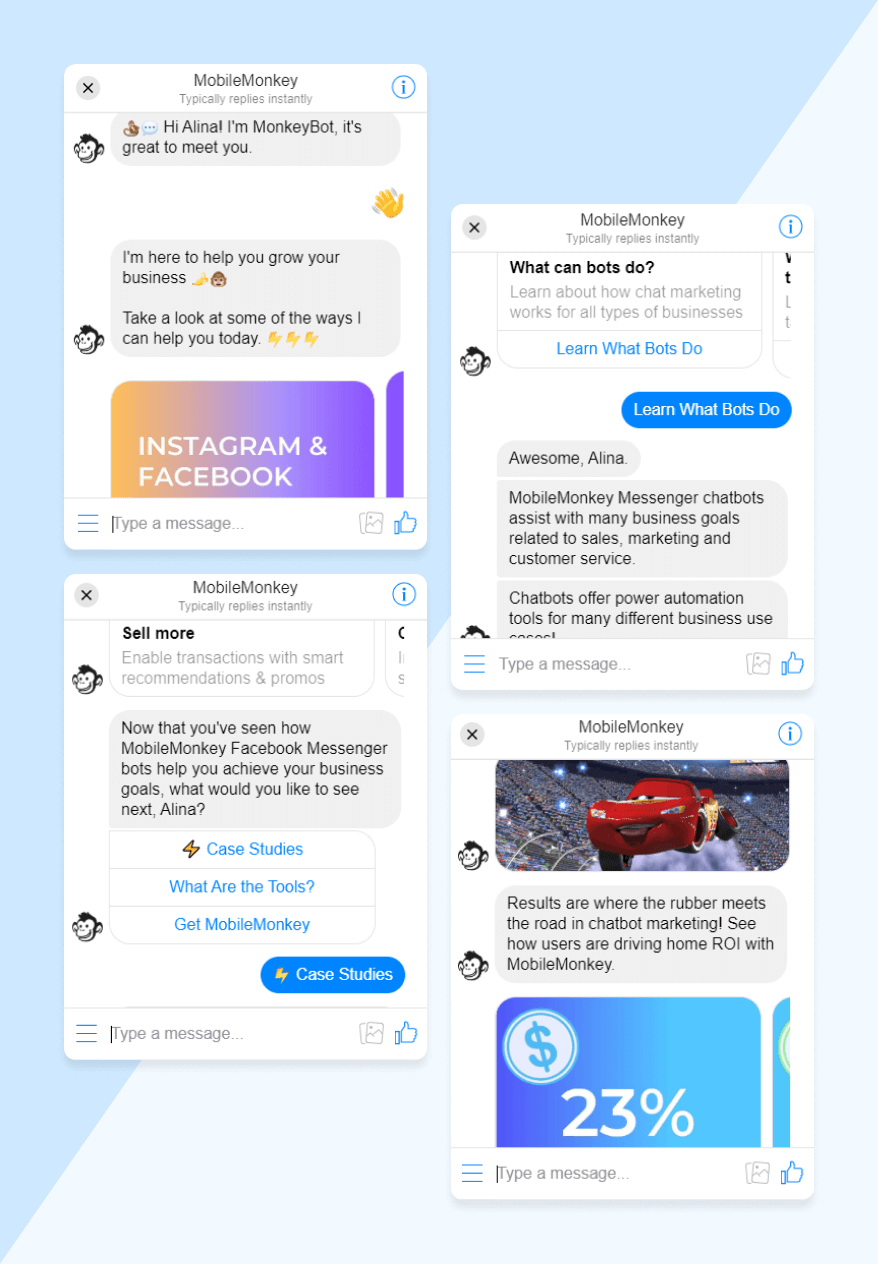
All you need to do is to connect Mobile Monkey to your business account on Facebook. After that, you select a pre-made template or customize it by yourself → add dialogues → test your new tool! It will be able to:
It is useful to build your chatbot flow, so when choosing a platform for creating a chatbot, remember that it should provide options on how conversations will branch out (multiple choice or drag-and-drop responses). Try to understand your users in the best way and deliver them the most relevant and effective solutions.
It is also important to note that you should keep an eye on the Intelligent Agent category and even consider building a chatbot for Alexa.
Another wise step is the integration of a chatbot with your CRM (using application programming interface (APIs)). This will help you create relevant customer interaction strategies. With this integration, you can personalize your bot according to each customer’s preferences or message history. Your users can even get customized services according to their age or profile information.
Though chatbot is a smart technology, its integration with ecommerce websites is simple. Whether the website is built using Woocommerce, Shopify, Opencart, or Magento, chatbot development can be done at a reasonable price.
Below, we list the most important rules you should follow in your ecommerce bot development. Use them, and get the maximum benefit for your e-business:
Chatbots saved around $20 million for businesses in 2017. But how do you know whether yours one works for your business? The following seven metrics will indicate the success of using a chatbot.
The best method of defining a success is ROI. There are many ways a bot can positively impact the company’s revenue. For instance, you can measure the amount of money that was saved by replacing a 24/7 support team with a bot. If clients are more satisfied with a bot rather than with a support team, it will result in higher user retention (repeat purchases mean revenue growth!).
If you use chatbots to speed up the customer service, then you can measure the success of the self-service rate by gauging the percentage of interactions that ended in a positive result.
Another way to find out if your chatbot works is just to ask your customers about it. Set up the bot so that at the end it asks: “Would you recommend using our chatbot to a friend? Please rate it from 1 to 10”.
According to Net Promoter Score (NPS), you should measure customer experience using the following guidelines. First, group respondents according to their answers:
Then, count the percentage of each group and subtract the Detractors’ percentage from the Promoters’ percentage to get the NPS. NPS varies from -100 (if every customer is a Detractor) to +100 (if everyone is a Promoter).

Source: NetPromoter
Next, it’s worth it to pay attention to the Acquisition, Activation, Retention, Revenue, Referral metrics model (AARRR). This model helps to understand customer behavior. Regarding chatbots, our field of interest mostly lies in Activation and Retention rates. The activation rate is measured by calculating the number of users who respond with a relevant question, or make a request in response to the bot’s first message. This rate helps to show the bot’s usefulness, improve its work, or deactivate it if all the previous attempts were unsuccessful. At the same time, retention rate makes it possible to calculate the percentage of people who return to your chatbot over a set period of time. This time interval depends on the type of your business.
And last but not least, you can calculate the percentage of your customers’ questions that were correctly understood and processed by your chatbot. Bots who use machine learning will automatically measure their own progress by comparing enhancement in the self-service rate for a given period of time. A bot that trains itself will fill its own analysis gaps and highlight potential areas for further improvement.
The chatbot is one of the most promising innovations in the ecommerce industry. Customers do not need to call to support service to resolve common issues. In cases when a client requires personalized assistance, a chatbot can link them to the call center’s operator. This approach doesn’t only accelerate the process of interaction with the client, but also increases business efficiency.
Many multinational companies are already using this technology for sales, information gathering, and getting feedback from consumers. However, small businesses can benefit from chatbots too. The lack of time, a small number of employees, poorly developed technical capacities – all of these affects the quality and effectiveness of interactions with your customers. Chatbots help you avoid these problems and create loyalty to your brand.
When developing a chatbot it is better to use proven methods, ask professionals for help, and conduct testing on a small audience before launching your your own one. After that, your project is bound to succeed.
Share This Article

 7 Ways to Improve Customer Experience on Your Ecommerce Website
7 Ways to Improve Customer Experience on Your Ecommerce Website
Comments are closed.